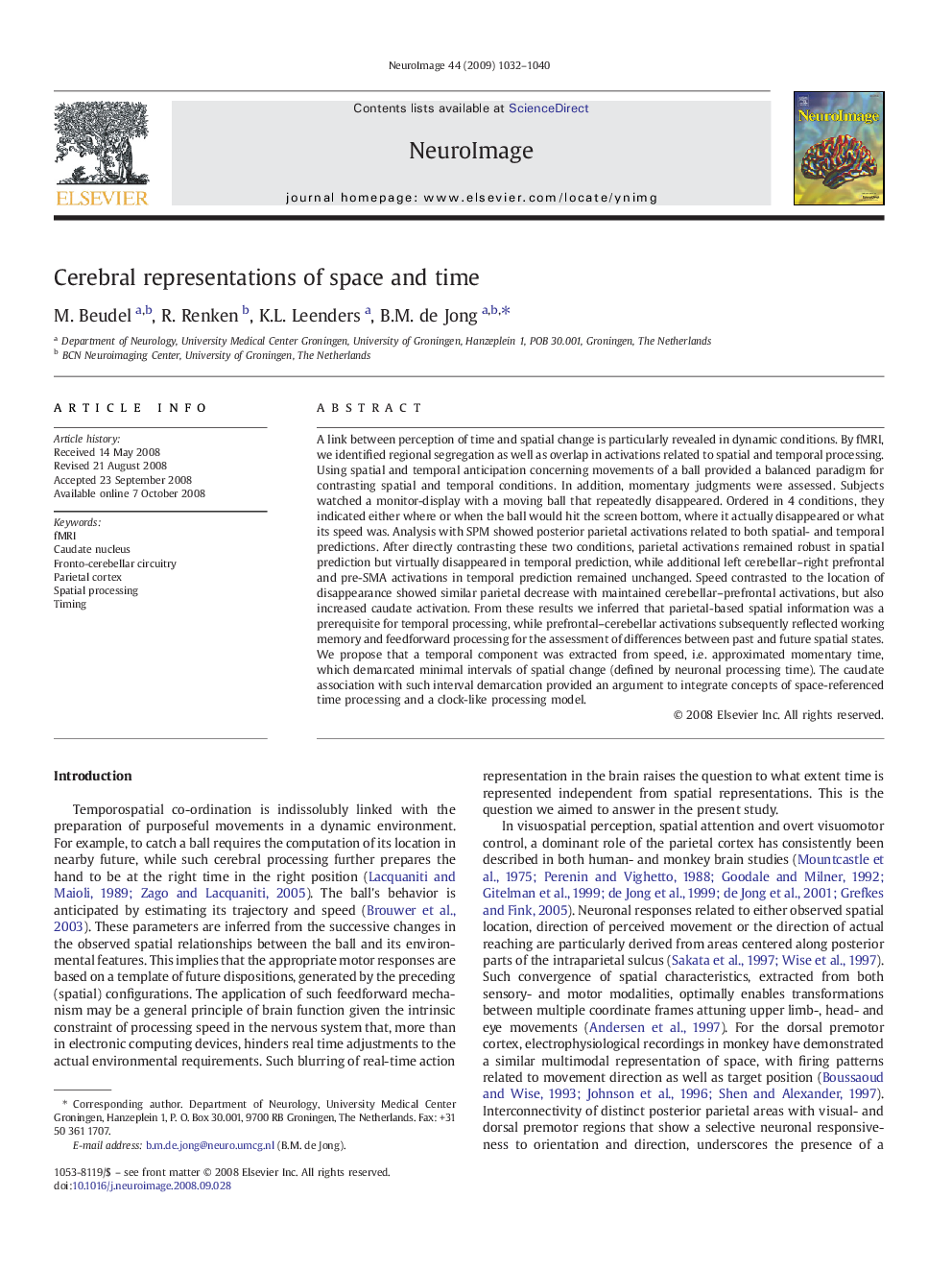| Article ID | Journal | Published Year | Pages | File Type |
|---|---|---|---|---|
| 6038394 | NeuroImage | 2009 | 9 Pages |
Abstract
A link between perception of time and spatial change is particularly revealed in dynamic conditions. By fMRI, we identified regional segregation as well as overlap in activations related to spatial and temporal processing. Using spatial and temporal anticipation concerning movements of a ball provided a balanced paradigm for contrasting spatial and temporal conditions. In addition, momentary judgments were assessed. Subjects watched a monitor-display with a moving ball that repeatedly disappeared. Ordered in 4 conditions, they indicated either where or when the ball would hit the screen bottom, where it actually disappeared or what its speed was. Analysis with SPM showed posterior parietal activations related to both spatial- and temporal predictions. After directly contrasting these two conditions, parietal activations remained robust in spatial prediction but virtually disappeared in temporal prediction, while additional left cerebellar-right prefrontal and pre-SMA activations in temporal prediction remained unchanged. Speed contrasted to the location of disappearance showed similar parietal decrease with maintained cerebellar-prefrontal activations, but also increased caudate activation. From these results we inferred that parietal-based spatial information was a prerequisite for temporal processing, while prefrontal-cerebellar activations subsequently reflected working memory and feedforward processing for the assessment of differences between past and future spatial states. We propose that a temporal component was extracted from speed, i.e. approximated momentary time, which demarcated minimal intervals of spatial change (defined by neuronal processing time). The caudate association with such interval demarcation provided an argument to integrate concepts of space-referenced time processing and a clock-like processing model.
Related Topics
Life Sciences
Neuroscience
Cognitive Neuroscience
Authors
M. Beudel, R. Renken, K.L. Leenders, B.M. de Jong,
